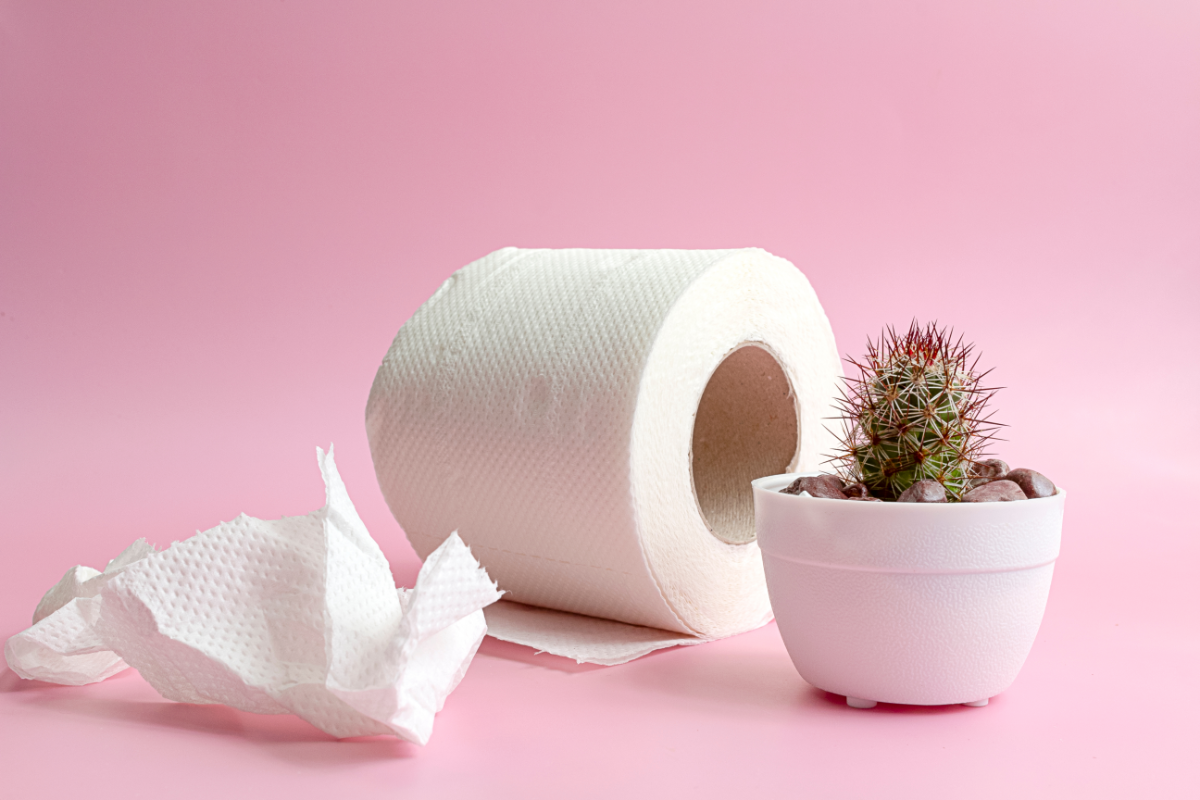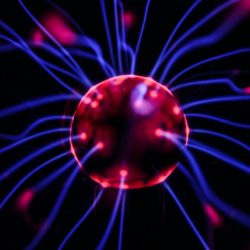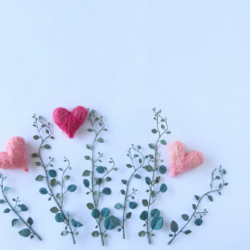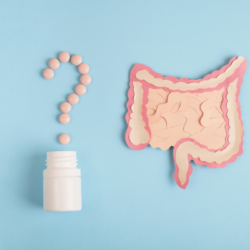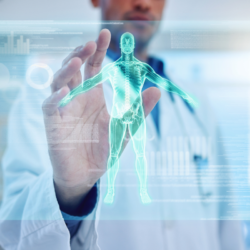Haemorrhoids are varicose veins in the mucosa of the anus and rectum. A distinction is made between internal haemorrhoids, visible by anoscopy, and external haemorrhoids, which protrude from the edge of the anus. Depending on their severity, there are several ways to relieve haemorrhoids or even eliminate them. The first concerns dietary hygiene rules; you need to eat plenty of fibre-containing foods (vegetables and fruit) and avoid foods such as spices, alcohol and coffee.
In short, haemorrhoids are a dilation of the vessels of the haemorrhoidal plexus in the anal canal. Symptoms include irritation and bleeding. Thrombosed haemorrhoids are usually painful.
What causes hemorrhoids ?
The haemorrhoidal pad consists of an arteriovenous vascular complex supplied from the superior rectal artery via the superior and middle haemorrhoidal arteries. Drainage is via the haemorrhoidal veins which circulate through the sphincter apparatus. The haemorrhoidal pads are therefore covered in mucous membrane and lie in a thick submucous layer of connective tissue and smooth muscle cells above the pectineal line (cavernous body of the rectum). They are held in position by connective tissue fibres that exert traction towards the internal anal sphincter muscle. Haemorrhoids occur when the vascular cushion is more developed than normal. The typical locations of haemorrhoids are indicated at 3, 7 and 11 o’clock in the lithotomy position, although there is considerable variability between individuals. They can be distinguished from the rectal mucosa by their more purplish colour.
What are the causes?
The postulated cause of haemorrhoid enlargement is venous congestion with consequent hyperplasia of the rectal corpus cavernosum and sliding of the tissue into the anal canal. An increased resting tone of the sphincter and a prolapse of the haemorrhoidal plexus may be at the root of the venous outflow disorder. An independent causative factor may be loss of function of the suspensory ligament around and above the arteriovenous vascular complex, which is made up of muscle fibres and elastic connective tissue fibres, associated with subsequent descent of the mucosa.
New morphological and haemodynamic assessments of the anorectal vascular plexus have also shown that the vascular convolutions have an intrinsic contraction mechanism consisting of smooth muscle cells, which regulate the supply and removal of blood volume and its rate of flow within the vessels. Destruction of this regulatory system, with muscle cells being replaced by connective tissue fibres, leads to the formation of haemorrhoids. The composition of collagen also seems to play a role; studies have shown an increase in matrix metalloproteinases within this collagen.
It is easy to imagine that mechanical irritation (e.g. due to diarrhoea, hard stools or handling) or an increase in intra-abdominal pressure (as in the case of pregnancy, visceral adiposity, ascites, etc.) exert an influence on these pathophysiological mechanisms, but these elements have not been proven to be the cause.
What is the role of the vascular cushion?
The physiological role of the vascular cushion is to guarantee faecal continence, in collaboration with the sphincter system. The juxtaposition of the mucosal folds makes the anal canal impermeable to liquid faeces and air. This ensures 15 to 20% of continence.
Internal hemorrhoids
A distinction must be made between “internal” haemorrhoids and the haemorrhoids formerly known as external haemorrhoids (now known as perianal veins), which are formed by a subcutaneous perianal vascular plexus covered by skin.
For internal hemorrhoids , the doctor may therefore use photocoagulation of the haemorrhoidal areas, or liquid nitrogen. Internal haemorrhoids generally manifest themselves by bleeding after defecation; blood can be seen on paper and sometimes in the toilet bowl. Internal haemorrhoids can be uncomfortable but are not as painful as thrombosed external haemorrhoids. They sometimes cause the discharge of mucus and a feeling of incomplete evacuation.
External hemorrhoids
Several methods are still used for external hemorrhoids : elastic ligation, which devitalises the haemorrhoids, photocoagulation, and injection of products causing sclerosis directly into the haemorrhoids (4 to 6 successive injections – good results). This last technique is also known as sclerotherapy. External haemorrhoids can thrombose, causing painful purplish swelling. Rarely, they may ulcerate and cause a small haemorrhage. Cleaning the anal area can be difficult.
Some naturopathic advice to avoid hemorrhoids
Haemorrhoids, swollen and inflamed veins in the rectum and anus, can cause significant pain and discomfort. Naturopathic treatment offers a gentle alternative that encompasses a variety of methods to relieve and prevent this condition. Here are some key naturopathic strategies:
A. Proper diet
A naturopathic approach to treating haemorrhoids starts with a balanced diet. Food choices play a crucial role in influencing the consistency of stools and the pressure on anal and rectal veins.
i. Recommended foods
Fibre-rich foods are particularly beneficial in the prevention and treatment of haemorrhoids. They contribute to the formation of soft stools, thus reducing the need to push during defecation, which can aggravate haemorrhoids. Recommended foods include:
- Fruit: berries, apples, pears, with their skins for maximum fibre intake.
- Vegetables: spinach, carrots and cabbage, which are not only rich in fibre but also contain nutrients essential for healthy veins.
- Whole grains: oats, quinoa and brown rice provide an excellent source of fibre and help maintain a healthy digestive system.
- Pulses: lentils, chickpeas and black beans are not only full of fibre, they are also an excellent source of vegetable protein.
ii. Foods to avoid
Certain foods can exacerbate haemorrhoid symptoms and should be avoided or limited. These include:
- Spicy foods: these can further irritate inflamed haemorrhoidal veins.
- Alcoholic drinks: alcohol can dehydrate and contribute to constipation.
- Dairy products: in excess, they can lead to constipation in some people.
- Processed foods and foods high in sugar: these tend to be low in fibre and can contribute to constipation.
B. The importance of hydration in the case of hemorrhoids
Hydration is crucial in the treatment of haemorrhoids. Drinking enough water every day helps prevent constipation and ensures that dietary fibre works effectively. Water helps to soften the stool, allowing it to pass more easily and reducing pressure on the affected areas. It is recommended to drink between 1.5 and 2 litres of water a day, depending on physical activity and climate.
C. Beneficial physical exercise
Regular exercise can help prevent and treat haemorrhoids. Physical activity increases blood circulation, which can reduce inflammation and help heal damaged tissue. The most beneficial exercises include:
- Walking: gentle activity that can improve circulation without putting too much pressure on affected areas.
- Yoga: poses such as mountain or pigeon pose can improve circulation in the pelvic area and relieve pressure.
- Swimming: non-impact exercise that relieves haemorrhoids without putting pressure on sensitive areas.
These naturopathic methods, combined with regular monitoring and lifestyle adjustments, can go a long way towards relieving haemorrhoid symptoms and improving quality of life. However, it is important to consult a healthcare professional for a precise diagnosis and a suitable treatment plan.
What about anti-hemorrhoidal medicinal plants?
Horse chestnut :
Theaescin contained in Horse Chestnut reduces the blood viscosity index, and has a tonic and vasoconstrictive action on the venous wall. Its venotonic and anti-inflammatory mechanism also involves interference with lysosomal enzymes: in vitro, it specifically inhibits hyaluronidase, an enzyme involved in the renewal of the main components of perivascular amorphous substance, and responsible in particular for degrading hyaluronic acid, a glycosaminoglycan widely distributed in connective tissue and one of the main components of the extracellular matrix. It also protects the proteoglycans that make up the vascular wall. In relation to its venous and capillary protective properties, horse chestnut is therefore indicated for haemorrhoidal attacks, haemorrhoidal thrombosis, anal fissures, haemorrhoidal symptoms (burning sensation, pain, pruritus, bleeding), as a basic treatment and to prevent recurrence of haemorrhoidal attacks.
Cypress :
Cypress is used for venous circulation problems (varicose veins, hemorrhoids), especially during the menopause (oestrogenic properties). Rich in tannins, particularly proanthocyanidolic oligomers (PCOs), cypress nuts have a venotonic, astringent, vasoconstrictive and anti-haemorrhagic action. The traditional use of cypress nuts to reduce the symptoms of venous insufficiency or haemorrhoidal disorders is linked in particular to its protective action on connective tissue. In connection with its circulatory activity, Cypress is used for venous and microcirculatory disorders.
Chrysanthellum :
Chrysanthellum, often called Chrysantellum americanum, is a plant renowned for its therapeutic properties, particularly in the field of vascular health. Its use dates back to ancient traditions, when it was already appreciated for its ability to promote good blood microcirculation, essential for combating vascular disorders such as varicose veins and haemorrhoids.
The active ingredients that give Chrysantellum its beneficial properties are mainly flavonoids. These natural compounds play a key role in protecting the vascular system. They act by reducing the permeability of blood capillaries, which means they help to reduce fluid leakage into surrounding tissues, a phenomenon that can lead to inflammation and oedema.
In addition, these same flavonoids strengthen the resistance of capillaries, making them less susceptible to damage and rupture that can occur as a result of high blood pressure or mechanical stress, for example during long periods of sitting or standing, thus helping to prevent varicose veins and haemorrhoids.
Chrysantellum’s effectiveness as a vasculoprotector and veinotonic makes it invaluable for people suffering from vascular disorders. As a veinotonic, it helps to tone and strengthen the veins, improving their function and preventing blood from stagnating, a common problem in haemorrhoids. This stimulation of circulation can also contribute to better elimination of toxins, reducing the inflammation and pain associated with haemorrhoids.
Witch hazel:
Witch hazel is a plant with recognised therapeutic properties, both orally and applied locally. Its vasoconstrictor action is essentially due to the proanthocyanidins found in the leaves. Witch hazel has a protective action on the vascular walls, particularly in venous disorders and their complications: heavy legs, impatience, varicose veins, post phlebitic syndrome, varicose ulcers, haemorrhoids, oedema, etc.
Lentisque Pistachio leafy twig essential oil:
This essential oil is used in venous and lymphatic circulatory disorders, as well as in history of phlebitis.Pistachio leafy twig essential oil is used for venous congestion and stasis, varicose veins and heavy legs, as well as internal and external haemorrhoids.
Homeopathic remedies for hemorrhoids: Homeopathic kit, Avenoc ointment by Boiron, Avenoc suppositories by Boiron.
Medical bibliographic sources and clinical trials:
- Suter A, Bommer S, Rechner J. Treatment of patients with venous insufficiency with fresh plant horse chestnut seed extract: a review of 5 clinical studies. Adv Ther. 2006
- Siebert U, Brach M, Sroczynski G, Berla K. Efficacy, routine effectiveness, and safety of horse chestnut seed extract in the treatment of chronic venous insufficiency. A meta-analysis of randomized controlled trials and large observational studies. Int Angiol. 2002
- Pittler MH, Ernst E. Horse chestnut seed extract for chronic venous insufficiency. Cochrane Database Syst Rev. 2012
- Longchampt A., “L’Hamamelis Hamamelis virginiana L.”, Thèse de pharmacie. 1997
- European medicines agency, Community herbal monograph on Hamamelis virginiana L., cortex. 2011
- Aigner F, Gruber H, Conrad F, Eder J, Wedel T, Zelger B. Revised morphology and hemodynamics of the anorectal vascular plexus: impact on the course of hemorrhoidal disease. Int J Colorectal Dis. 2009
- Kisli E, Kemik A, Sümer A, Kemik Ö. Matrix metalloproteinases in pathogenesis of hemorrhoidal disease. Am Surg. 2013

